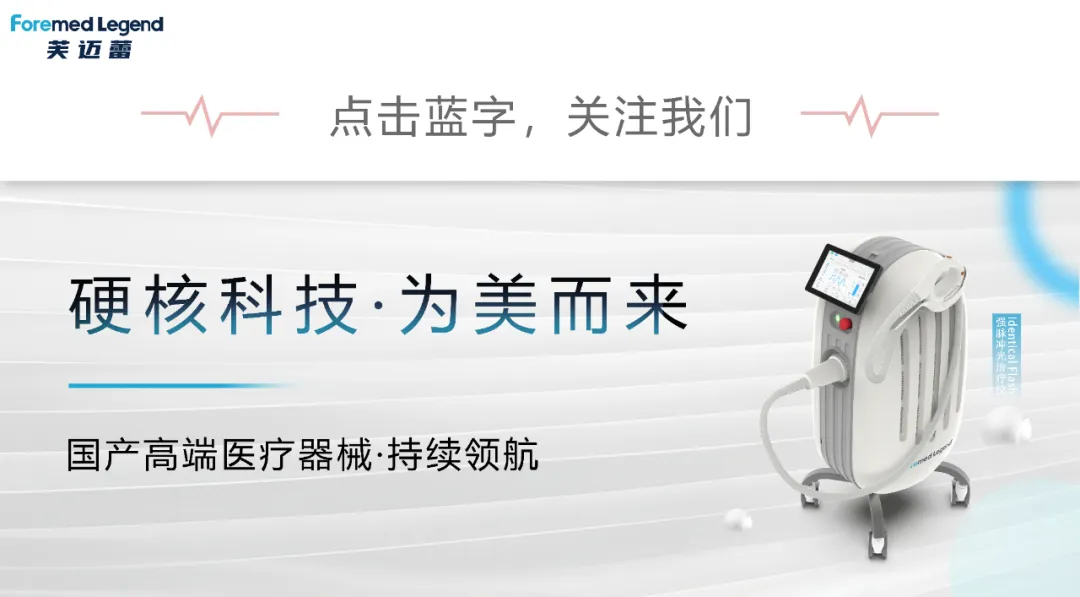Share:

How did you perform in the last Q&A class? We have prepared detailed answers and analysis. Now let's review and test your learning results together!
Answer + Analysis
1. Spectral selectivity In IPL technology, which skin problems are usually treated with a wavelength of 500-600 nanometers?
A.
Spots and pigmentation
B. Vascular problems
C. Skin firmness and collagen stimulation
D. Wrinkles and lines
Answer: A.
Spots and pigmentation
Analysis: In IPL (intense pulsed light) technology, different wavelengths of light have different effects on different skin problems. For spots and pigmentation problems, IPL devices usually choose light wavelengths of 500-600 nanometers. This is because the light energy in this wavelength range is better absorbed by the pigments in the skin (such as melanin), which can effectively destroy the pigment particles in the spots. Through this selective absorption, the pigment in the spots will be decomposed and gradually eliminated through the natural metabolic process in the body, thereby achieving the effect of lightening the spots. This selective absorption principle makes the surrounding normal skin unaffected during the treatment.
2. Which wavelength of light can penetrate the dermis and stimulate the production of collagen?
A. 500-600 nanometers
B. 550-650 nanometers
C. 600-1200 nanometers
D. 400-500 nanometers
Answer: C.
600-1200 nanometers
Analysis: Stimulating collagen production is an important application of IPL treatment, especially in improving skin texture and firmness. To achieve this effect, IPL devices use light wavelengths of 600-1200 nanometers. This range of light wavelengths is able to penetrate the epidermis layer of the skin and reach the dermis. The dermis is the middle layer of the skin and contains a large amount of collagen and elastic fibers. By stimulating light energy in this layer, IPL can stimulate the production of collagen and elastic fibers in the dermis, helping to repair and rebuild the skin's structure and improve the skin's firmness and elasticity. This deep light stimulation can improve the texture and overall appearance of the skin.
3. For problems such as vasodilation and red blood streaks, what wavelength range of light does the IPL device choose?
A.
500-600 nanometers
B. 550-650 nanometers
C. 600-1200 nanometers
D. 300-400 nanometers
Answer: B.
550-650 nanometers
Analysis: When dealing with problems such as vasodilation and red blood streaks, IPL devices usually choose a wavelength range of 550-650 nanometers. This is because hemoglobin absorbs light best in this wavelength range. Hemoglobin is the main component of blood, and it can effectively absorb light energy in this wavelength range, so that vasodilation or red blood streaks are effectively heated and destroyed. After treatment, the damaged blood vessels are gradually cleared by the body's natural metabolic mechanism, thereby reducing the appearance of red blood streaks and vasodilation. This mechanism of selective light absorption allows IPL to focus on treating blood vessel-related skin problems without affecting the surrounding healthy skin.
4. What factors affect spectral selectivity?
A. Skin pigment content, target tissue properties, spectral characteristics of the light source
B. Appearance of the device, technique used, light intensity
C. Skin humidity, air temperature, user age
D.
Frequency of use, operation time, brand of light source
Answer: A. Skin pigment content, target tissue properties, spectral characteristics of the light source
Analysis: Spectral selectivity is crucial in IPL treatment and is affected by many factors. First, the pigment content of the skin determines the degree of light absorption, because different colors of pigments have different light absorption abilities. Second, the properties of the target tissue also affect the selectivity of light, such as pigmentation and vascular problems respond differently to different wavelengths of light. Finally, the spectral characteristics of the light source determine the range of wavelengths that can be used, which directly affects the effect and safety of the treatment. Understanding these factors and choosing the appropriate light wavelength according to specific treatment needs can improve the effect of treatment and reduce side effects.
5. In IPL treatment, individual differences are mainly reflected in what aspects?
A. Difficulty of operating the equipment
B. Skin type, pigment content and treatment needs
C. Brand and model of the spectrum
D.
Post-treatment care procedures
Answer: B.
Skin type, pigment content and treatment needs
Analysis: In the process of IPL treatment, individual differences are mainly reflected in skin type, pigment content and treatment needs. Different people's skin types (such as dry, oily or mixed) and skin pigment content (such as the depth of skin color or the degree of pigmentation) will affect the effect of treatment. For example, dark skin may absorb light energy more easily, so the light intensity or wavelength needs to be adjusted to avoid skin burns or other side effects. In addition, different individuals have different treatment needs. Some people may focus on the fading of spots, while others may focus more on skin firmness or wrinkle improvement. According to these individual differences, the treatment plan needs to be personalized to obtain the best treatment effect.
Copyright © Suzhou Foremed Legend Technology Co., Ltd.